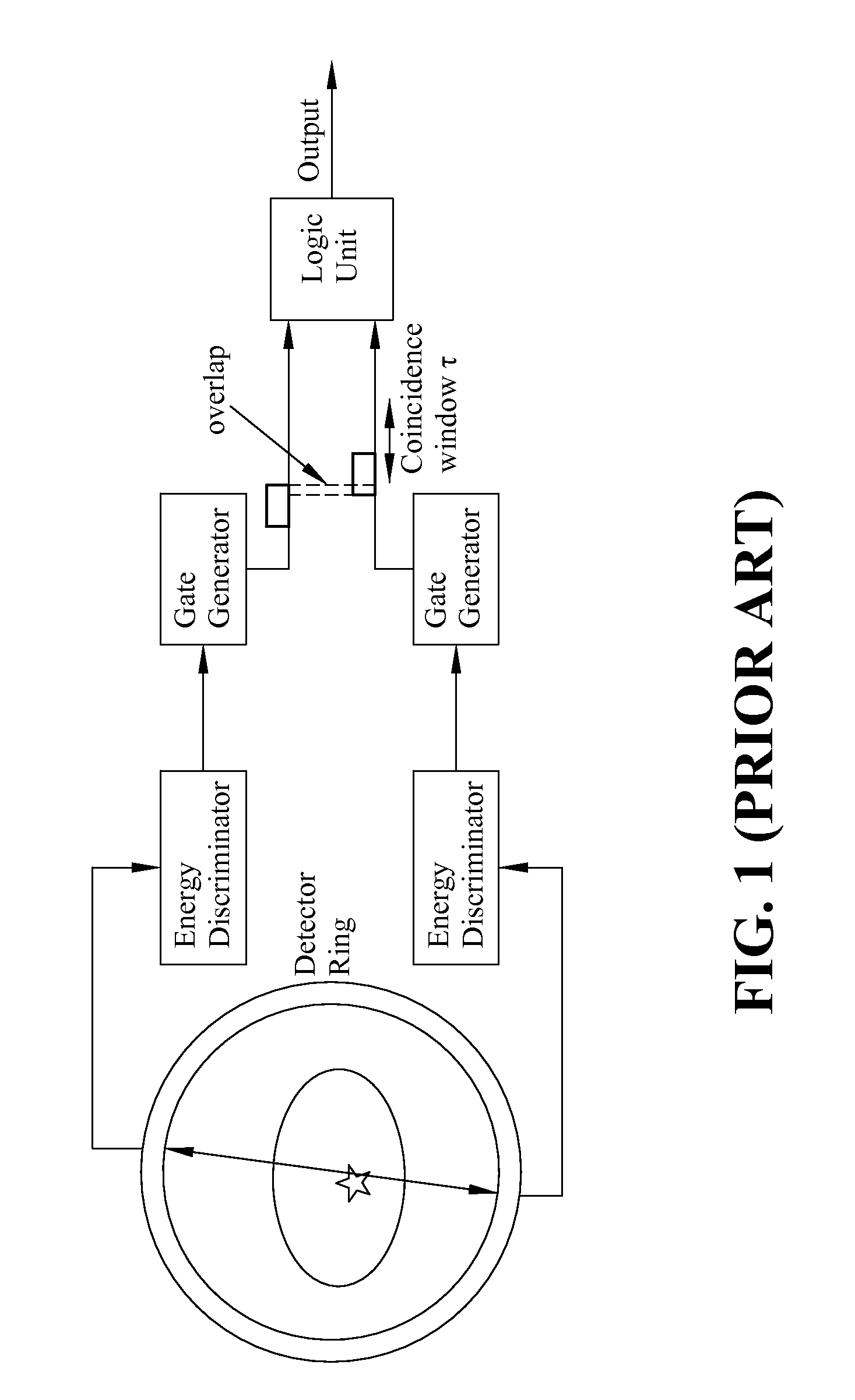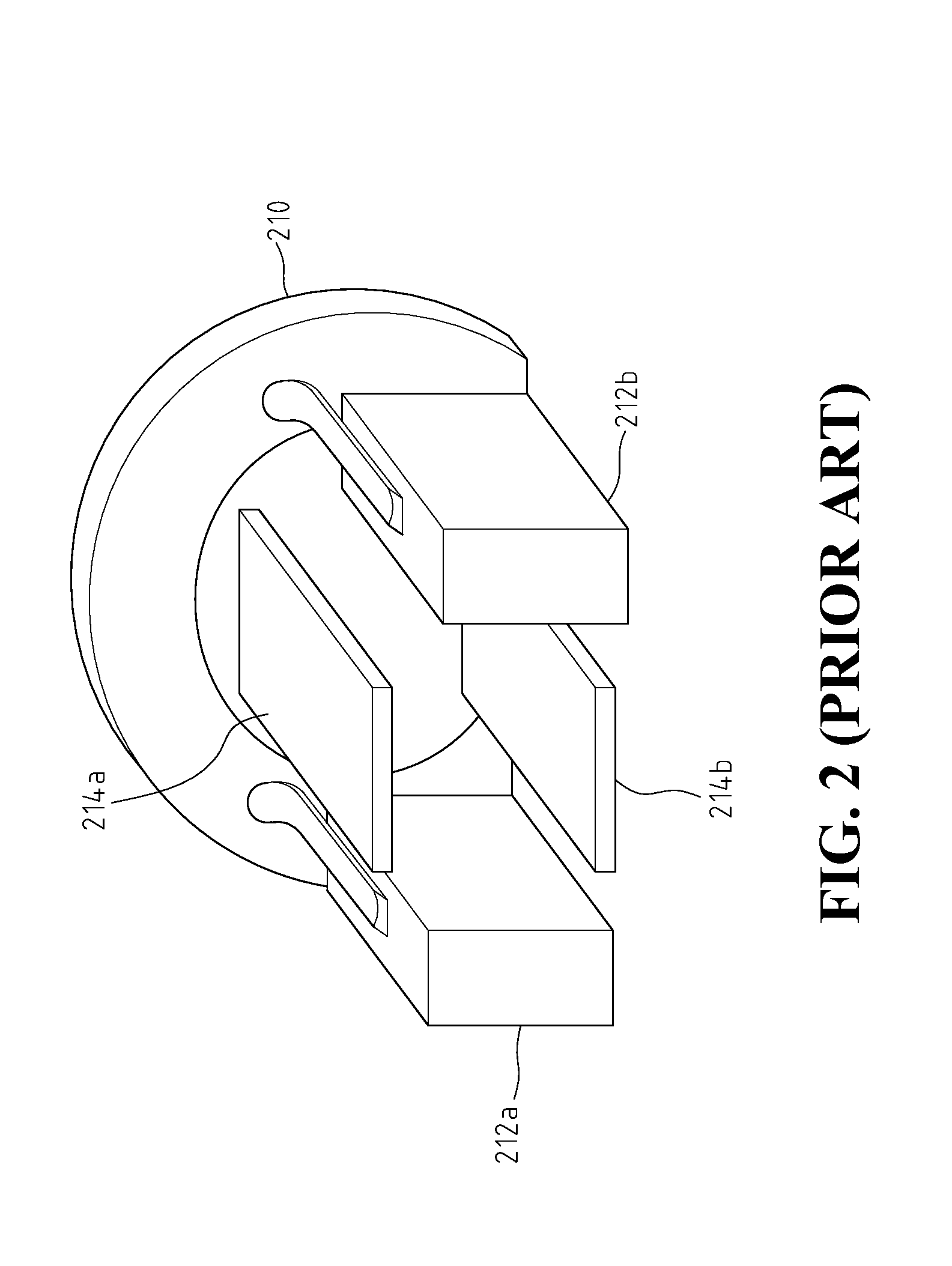Imaging System And Method For The Non-Pure Positron Emission Tomography
a positron emission tomography and imaging system technology, applied in the field of imaging system and method for the non-pure positron emission tomography, can solve the problems of short half-life of sup>18/sup>f, limited spatial resolution of a pet system, and limited use of sup>18/sup>f, etc., to achieve good temporal resolution and high signal-to-noise ratio
- Summary
- Abstract
- Description
- Claims
- Application Information
AI Technical Summary
Benefits of technology
Problems solved by technology
Method used
Image
Examples
Embodiment Construction
[0029]FIG. 3 shows an embodiment according to the present invention. Referring to FIG. 3, the NPET system consists of two types of detection systems. The first type of detection system is referred to a PET subsystem and the second type of detection system is referred to a SPECT subsystem. These two subsystems are connected by a triple coincidence circuit 303. The PET subsystem simultaneously detects two annihilated photons (511 KeV). The direction of the annihilated photons (called annihilation line) is along the line of response (LOR) connected by the two detectors that coincidently intercept the photons. The SPECT subsystem is a detector 302a with at least one collimator 302b to detect an associated photon with the direction specified by the collimator 302b. During scanning an object 310, the NPET system is placed surround the object 310. The position of a point source is determined through the detection of the three photons. The signals from these three photons after an energy di...
PUM
 Login to View More
Login to View More Abstract
Description
Claims
Application Information
 Login to View More
Login to View More - R&D
- Intellectual Property
- Life Sciences
- Materials
- Tech Scout
- Unparalleled Data Quality
- Higher Quality Content
- 60% Fewer Hallucinations
Browse by: Latest US Patents, China's latest patents, Technical Efficacy Thesaurus, Application Domain, Technology Topic, Popular Technical Reports.
© 2025 PatSnap. All rights reserved.Legal|Privacy policy|Modern Slavery Act Transparency Statement|Sitemap|About US| Contact US: help@patsnap.com



